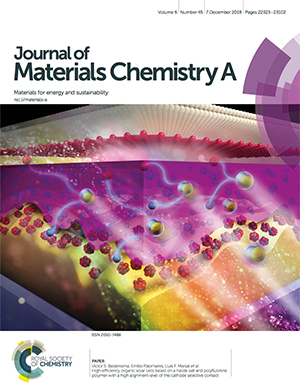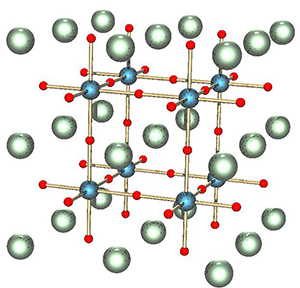Prof. Emilio Palomares

Group Leader:
Emilio Palomares, ICREA Professor
Laboratory Engineer:
Santi Gené / Werther Cambarau
Administrative Support:
Eva Busto
Postdoctoral researchers:
Rajesh Pudi / Núria Fernández Moncada / Maria Mendez / Roger Mallol / Chuanjun Wang / Laura Buglioni
PhD students:
Jesús Jiménez / Ilario Gelmetti / Sofia Paulo / Cristina Rodriguez / Ece Aktaç
Summary
The group of Prof. Palomares works on the synthesis and characterization of molecules and materials with optical and electrical properties. Through these materials, the group manufactures electronic devices, including solar cells, light emitting diodes and sensors. Additionally, all interfacial load transfer reactions are characterized by the use of advanced photo-induced transient spectroscopy under operating conditions. The group has described the preparation of organic solar cells with an efficiency greater than 10% and solar cells of perovskite with an efficiency of 19%. These efficiency values are among the best published in the scientific literature and have been possible thanks to the study and minimization of the losses of recombination of loads. The group aspires to understand the relationship between the molecular structure and the function of the devices.

Publications
‘Efficient Non-polymeric Heterojunctions in Ternary Organic Solar Cells’
C. Rodríguez Seco, A. Vidal-Ferran, R. Misra, G. D. Sharma, E. Palomares
ACS Appl. Energy Mater. 2018, 1 (8), 4203–4210
‘High-efficiency organic solar cells based on a halide salt and polyfluorene polymer with a high alignment-level of the cathode selective contact’
V. S. Balderrama, J. G. Sánchez, G. Lastra, W. Cambarau, S. Arias, J. Pallarès, E.
Palomares, M. Estradae, L. F. Marsal
J. Mater. Chem. A 2018, 22534-22544
‘Organoboron donor-π-acceptor chromophores for small-molecule organic solar cells’
J. C. Nolasco; J. W. Ryan; M. Rodriguez; A. Castro-Carranza; J. L. Maldonado; G. Ramos-Ortiz; O. Barbosa-Garcia; J. Gutowski; E. Palomares; J. Parisi
J. Mater. Sci. Mater. Electron. 2018, 29 (19), 16410-16415
MORE PUBLICATIONS
‘Second-Generation Azafullerene Monoadducts as Electron Acceptors in Bulk Heterojunction Solar Cells’
M. Bothe; M. P. Montero-Rama; A. Viterisi; W. Cambarau; C. Stenta; E. Palomares; L. F. Marsal; M. von Delius
Synthesis 2018, 50 (4), 764-771
‘Visible and near-infrared organic photosensitizers comprising isoindigo derivatives as chromophores: synthesis, optoelectronic properties and factors limiting their efficiency in dye solar cells’
C. Aumaitre; C. Rodriguez-Seco; J. Jover; O. Bardagot; F. Caffy; Y. Kervella; N. Lopez; E. Palomares; R. Demadrille
J. Mater. Chem. A 2018, 10074-10084
‘Reduced Energy Offsets and Low Energy Losses Lead to Efficient (∼10% at 1 sun) Ternary Organic Solar Cells’
M. Privado, C. Rodríguez Seco, R. Singhal, P. de la Cruz, F. Langa, G. D. Sharma, E. Palomares
ACS Energy Lett 2018, 3 (10), 2418-2424
‘Diphenylphenoxy-Thiophene-PDI Dimers as Acceptors for OPV Applications with Open Circuit Voltage Approaching 1 Volt’
C. Stenta, D. Molina, A. Viterisi, M.P. Montero-Rama, S. Pla, W. Cambarau, F. Fernández-Lázaro, E. Palomares, L.F. Marsal, A. Sastre-Santos
Nanomaterials 2018, 8, 211
‘Advances in the Synthesis of Small Molecules as Hole Transport Materials for Lead Halide Perovskite Solar Cells’
C. Rodríguez-Seco, L. Cabau, A. Vidal-Ferran, E. Palomares
Acc. Chem. Res. 2018, 51 (4), 869–880
‘Benzothiadiazole Substituted Semiconductor Molecules for Organic Solar Cells: The Effect of the Solvent Annealing Over the Thin Film Hole Mobility Values’
C. Rodríguez-Seco, S. Biswas, G.D. Sharma, A. Vidal-Ferran, E. Palomares
J. Phys. Chem. C 2018, 122 (25), 13782−13789
‘o,p-Dimethoxybiphenyl Arylamine Substituted Porphyrins as Hole Transport Materials: Electrochemical, Photophysical and Carrier Mobility Characterization’
R. Pudi, C. Rodríguez-Seco, A. Vidal-Ferran, P. Ballester, E. Palomares
Eur. J. Org. Chem. 2018, 2018 (18), 2064-2070.
‘Photo-Induced Dynamic Processes in Perovskite Solar Cells. The Influence of Perovskite Composition in the Charge Extraction and the Carriers Recombination’
N.F. Montcada, M. Méndez, K.T. Cho, M.K. Nazeeruddin, E. Palomares
Nanoscale 2018, 10, 6155-6158
‘Increasing the Effciency of Organic Dye-Sensitized Solar Cells over 10.3% Using Locally Ordered Inverse Opal Nanostructures in the Photoelectrode’
L. Xu, C. Aumaitre, Y. Kervella, G. Lapertot, C. Rodríguez-Seco, E. Palomares, R. Demadrille, P. Reiss
Adv. Funct. Mater. 2018, 28 (15), 1706291
Projects
Foto Transfer
Procesos de Transferencia de carga en dispositivos fotovoltaicos híbridos: Nanocristal semiconductor/melécula orgánica semiconductora
Ministerio | Ref: CTQ2016-80042-R
Materials i Dispositius Optoelectrònics
AGAUR | Ref: 2017 SGR 978
Features
Understanding how perovskites work
http://www.iciq.org/understanding-how-perovskites-work/
